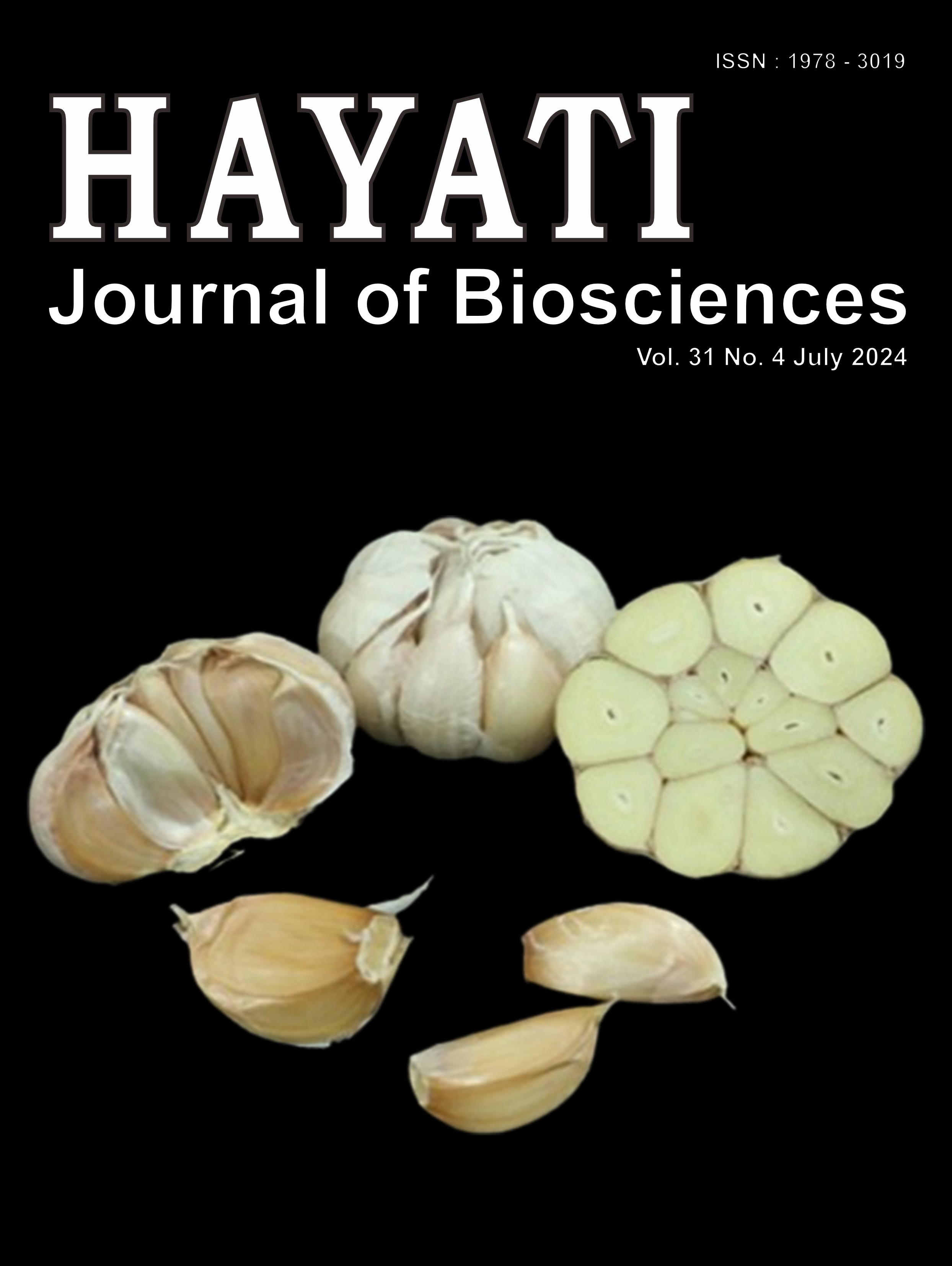Phenotypic and Estimated Genetic Variability in Endemic Diospyros celebica Bakh. and Widely-spread D. blancoi A.Dc. Cultivated at Purwodadi Botanic Garden, Indonesia
Abstract
The endemic Diospyros celebica and widely spread D. blancoi are two valuable species of Diospyros (the genus of persimmons and ebonies) that have been conserved at botanic gardens in Indonesia. Understanding the biological contrasts between endemic and widely spread species is essential for plant conservation. This study aims to compare the phenotypic and estimated genetic variability between the endemic D. celebica and the widely spread D. blancoi to support their conservation. Fifty-three morphological characters from fifteen selected living plant specimens at Purwodadi Botanic Garden were measured directly or using variable encoding methods. Unpaired two-samples Wilcoxon test and hierarchical cluster analysis were used to compare morphological variations between both species. Further, genetic variabilities were estimated from encoded morphological characters using GenAlEx 6.503 software. The two Diospyros’ morphological characters were significantly different, except for the lamina length, pairs of leaf vein, number of flowers in each inflorescence, and the fruit sulci presence. The cluster analysis successfully distinguished D. celebica from D. blancoi according to thirteen comparable morphological characters. The endemic D. celebica has lower genetic variability (female/bisexual %P = 86.21%, He = 0.259, uHe = 0.277; male P = 54.29%, He = 0.195, uHe = 0.234) than the widely spread D. blancoi (female/bisexual %P = 86.76, He = 0.311, uHe = 0.355). Due to the importance of genetic diversity in plant conservation, both species’ population size needs to be maintained, if not increased, to preserve the existing phenotypic and genetic variabilities within the cultivated populations at the botanic garden.
Downloads
Copyright (c) 2024 Ilham Kurnia Abywijaya, Ridesti Rindyastuti, Fira Fitria Jihans, Anjar Tri Wibowo

This work is licensed under a Creative Commons Attribution-NonCommercial 4.0 International License.
HAYATI J Biosci is an open access journal and the article's license is CC-BY-NC. This license lets others distribute, remix, tweak, and build upon author's work, as long as they credit the original creation. Authors retain copyright and grant the journal/publisher non exclusive publishing rights with the work simultaneously licensed under a https://creativecommons.org/


















.png) IPB University
IPB University Department of Biology
Department of Biology The Indonesian Biological Society
The Indonesian Biological Society 

